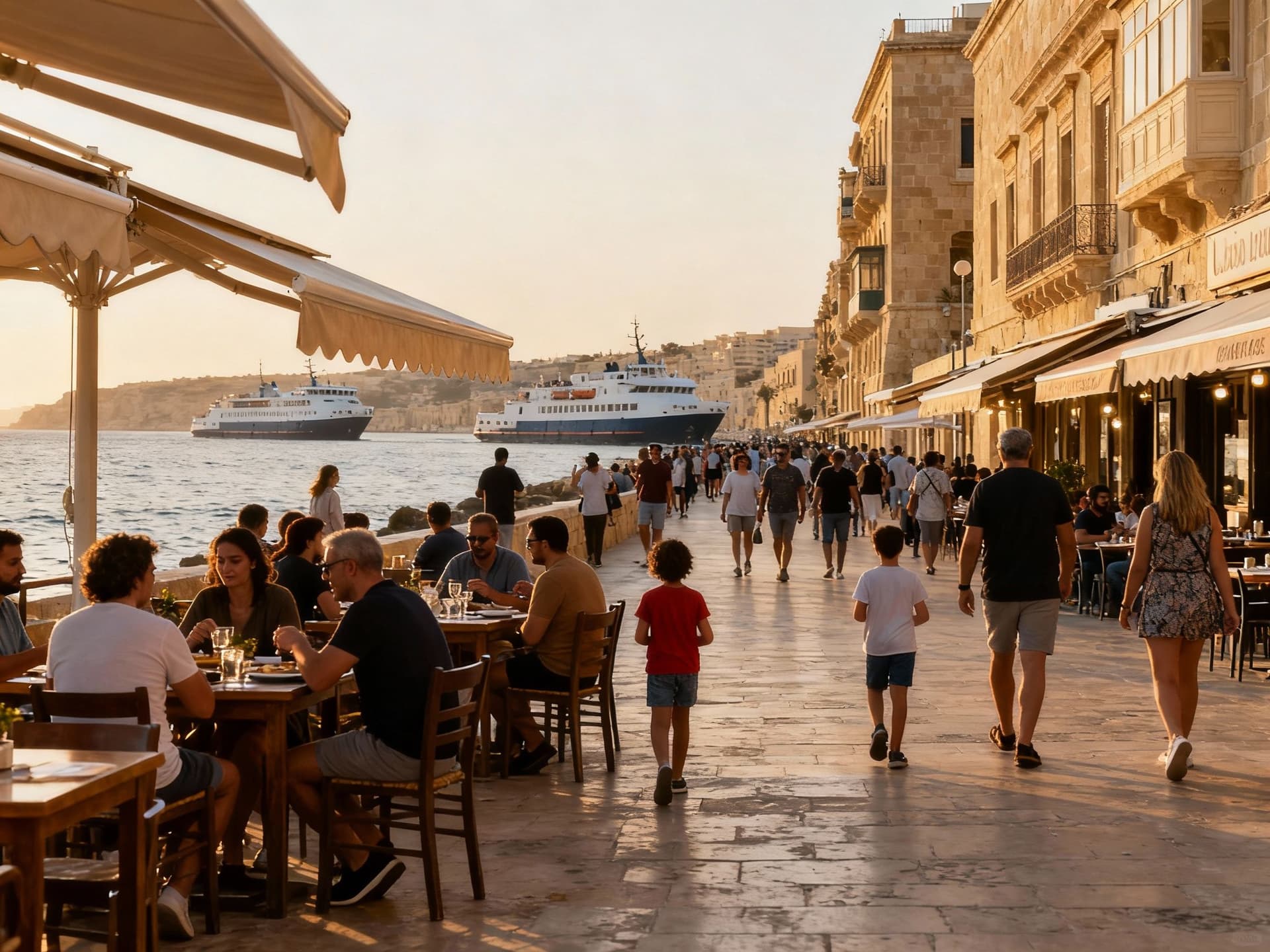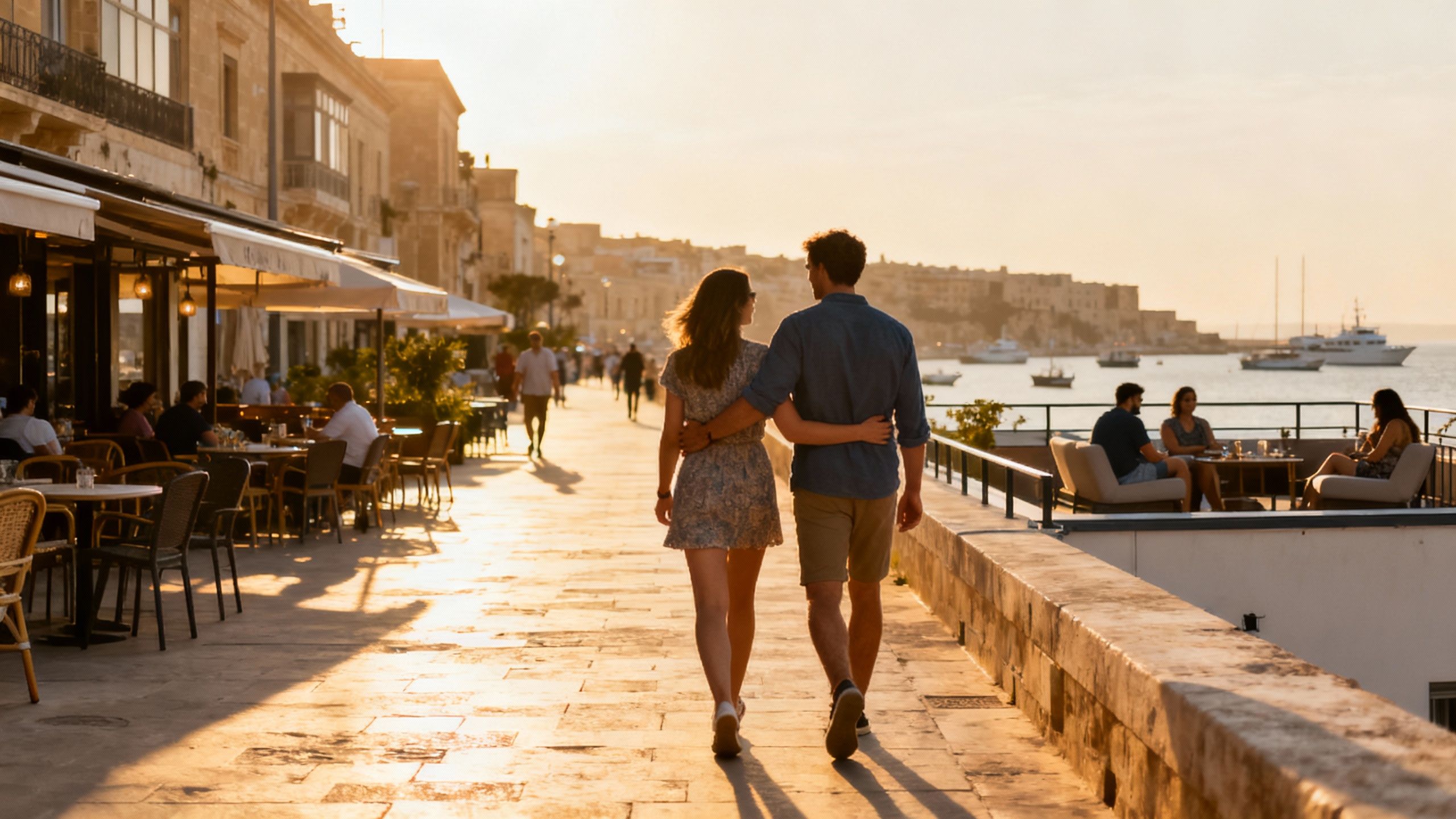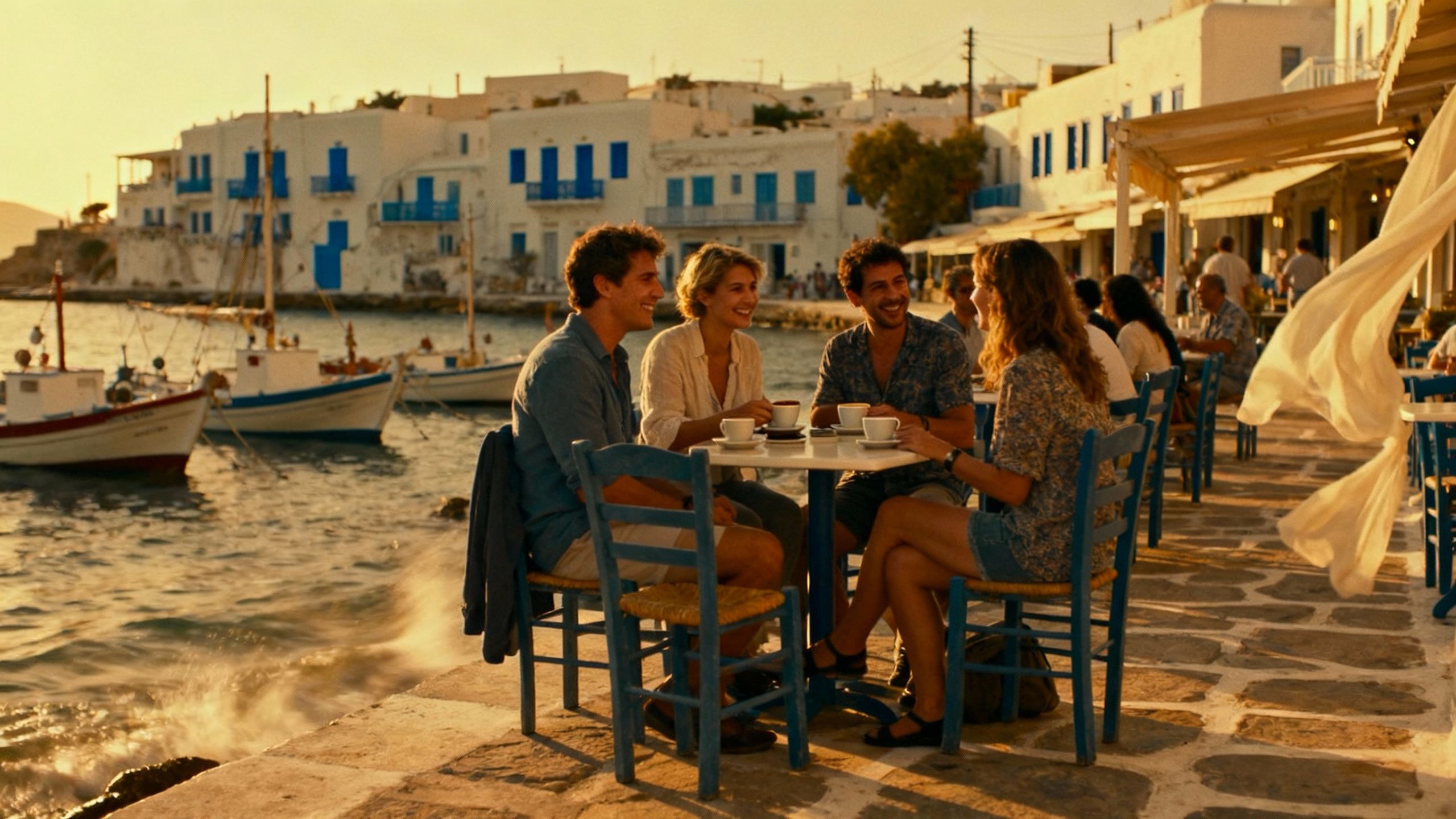Why Sliema’s Price Tag Hides Better Value Nearby
Malta’s appeal is in daily rituals and heritage fabric; recent NSO data shows continued price rises, so match neighbourhood life with market insight before you buy.
Imagine a late‑afternoon passeggiata along Sliema’s promenade: espresso at a stone table, ferry horns in the distance and the sea a cool, briny backdrop to conversations in English and Maltese. This is Malta in small, vivid moments—compact, intensely lived and shaped by sunlight on limestone. For many buyers these scenes define the dream, yet the practical reality of where to buy is layered: price momentum, neighbourhood rhythms and policy shifts quietly change which streets still offer value. We begin with life first, then the numbers that will determine how you join it.
Living the Maltese Life

Days in Malta are measured in light and ritual: morning markets in Marsaxlokk, cafés in Valletta’s Strait Street, and balmy evenings on terrace-lined Triq il‑Kbira in Mdina. The island’s scale—just 27 by 14 kilometres—means a weekend can include a coastal swim, a countryside walk and dinner in a 16th‑century auberge. English as an official language makes integration straightforward for many internationals, while Maltese idioms, festas and siesta rhythms shape how neighbourhoods feel at different hours. These daily textures should steer where you buy more than headline prices alone.
Valletta and the Grand Harbour cluster: history as a living fabric
In Valletta, baroque facades, narrow streets and grandterrazza views create a daily theatre of light and shadow. Living here means short walks to theatres, specialist food purveyors and a compact social life centred on piazzas and music festivals. Properties are often heritage apartments requiring sensitive restoration, which rewards buyers with rooms that breathe history and unusually generous ceiling heights. If provenance and architectural pedigree matter, Valletta is unsurpassed—but expect concentrated demand and a price premium for authenticity.
Sliema & St Julian’s: seaside convenience and social density
Sliema’s promenade and St Julian’s waterfront offer the most immediate seaside life—cafés spilling onto sidewalks, contemporary apartment blocks and a steady tourist pulse in summer. These areas are the island’s commercial heart for expatriates: international schools, boutique gyms and restaurants cluster here. The trade‑off is apparent: convenience and rental demand come with denser development and higher price per square metre. For buyers after a turnkey, cosmopolitan life, these neighbourhoods deliver, but they are not the only route to a life by the sea.
- Morning coffee at Caffe Cordina (Valletta) — a century of people‑watching and artisan patisserie
- Sunday fish market in Marsaxlokk — fresh catch and lunchtime conversations among locals
- Evening aperitifs in Balluta Bay, Sliema — terraces facing sheltered water and steady light
- Hidden lanes of Vittoriosa and Senglea — fortifications, boatyards and a quieter harbour life
Making the Move: Practical Considerations

If the lifestyle seduces, the figures demand attention. Malta’s Residential Property Price Index rose noticeably through 2024–2025, with maisonettes and apartments among the faster‑growing segments, underscoring persistent demand in urban and coastal areas. The statistics are a reminder: location choice now intertwines with timing and property type—buying a heritage apartment in Valletta differs in both cost and stewardship from purchasing a modern flat in Sliema. Knowing where growth sits helps shape a strategy that preserves lifestyle while managing future value.
Property types: maisonettes, apartments and terraced houses
Maisonettes—characterised by ground‑floor entrances and private terraces—are prized for outdoor life and often command a premium where rear courtyards or roof terraces appear. Apartments provide ease and better rental liquidity in Sliema and St Julian’s, while terraced houses and stone cottages in southern villages or Gozo offer space, quieter streets and a different cost profile. Choice of property should reflect how you intend to live: morning light, outdoor dining, or short walks to cafés are all practical determinants of form.
Working with local experts who know the life as well as the law
Choose agents who speak both the language of lifestyle and of local procedure: they will point to streets where light, sea‑breeze and neighbourly life align with investment logic. Recent policy changes around citizenship‑by‑investment have already altered some buyer profiles, reducing a pool of absentee purchasers and shifting demand toward more settled owners. A good agency will surface off‑market opportunities, explain restoration constraints on heritage fabric, and advise on rental prospects without resorting to broad claims. Treat them as curators of place, not merely brokers of price.
- Inspect in person at different times of day to judge light and noise; engage a local architect early if the property is heritage; confirm the RPPI trend for neighbourhoods with the NSO or local reports; prioritise neighbourhood life over headline square‑metre figures.
Insider Knowledge: What Expats Wish They'd Known
Expat accounts often trace the same arc: enchantment, small surprises and then an easy rhythm. People speak of unexpected pleasures—the quiet of Dingli Cliffs at dusk, neighbourhood festas that gatekeep friendship, and shops that close for a thin hour at midday. They also recount hidden costs: sympathetic restoration of limestone façades, air‑conditioning in older buildings, and parking demands in denser towns. These are not deal breakers, merely the modest stewardship costs of living in a place that has been lived in for centuries.
Cultural integration, language and community
English eases practicalities—healthcare, property paperwork and schooling—but learning Maltese opens doors to invitations, festa networks and a fuller sense of place. Many buyers find community via local clubs, church events or small businesses rather than expatriate enclaves. If you want immersion, look for streets with family homes and longer‑term residents; if convenience matters, Sliema and St Julian’s keep services and social life close at hand. Either way, personal presence—time spent in cafés, grocery shops and at the harbour—converts a house into a neighbourhood home.
How life changes after a move — stewardship, seasons and scale
The island’s seasons are gentle but distinct: summers bring a social swell and higher short‑term rental income; winters emphasise neighbourhood life and quieter coves. Long‑term owners tell a simple truth: properties that age well are those treated as homes from day one—invest in proper ventilation, limestone care and sympathetic shutters. Over time, your priorities often shift from immediate sea view to morning light, neighbours and the convenience of a local grocer. Those shifts should guide both initial purchase and subsequent improvements.
- Practical red flags to watch for:
- Unresolved restoration orders on heritage façades; unclear boundaries on terrace rights; properties listed for speculative conversion without proper approvals; mismatch between advertised and usable outdoor space.
- Step‑by‑step local move plan: 1) Visit neighbourhoods across different times and seasons; 2) Commission a structural survey and a local planning check; 3) Agree terms with an agent who provides comparable transactions; 4) Engage a notary and confirm tax/timing implications before exchange.
Malta’s compactness is its chief attraction and its chief complexity: every short street carries a lifetime of uses, histories and neighbours. For buyers who prize craftsmanship, provenance and a life that moves between cafes, coastal swims and evening concerts, the island rewards patience, curiosity and an eye for detail. Start with the life you want—what mornings look like, where you imagine friends gathering—and use the data and local expertise to place that life on a street where it can flourish. When in doubt, seek an agent who knows the rhythm of both the festa and the contract.
Former Copenhagen architect who relocated to Provence, offering relocation services, market analysis, and a curator’s eye for authentic regional design.


